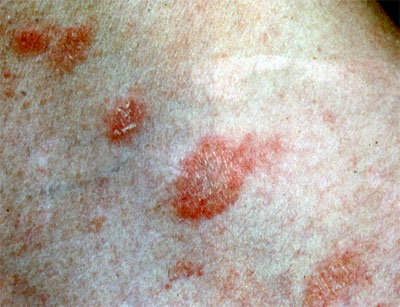|
|
|
Pityriasis rosea
Pityriasis rosea is a disease of unknown, but possibly infective origin, which is characterized by the development of a large papulosquamous lesion called a "herald patch".
This lesion, typically from 2 to 4 cm in diameter, exists as a solitary lesion for one week. After that time there is an explosion of smaller oval lesions of a similar morphology, predominantly on the trunk. The oval lesions lie, on the back, along lines of skin tension in a Christmas-tree pattern.
There can be an associated pruritus.
Lesions typically fade 6 to 12 weeks without treatment.
Lesions do not occur on the palms and soles, areas of involvement typically seen in secondary syphilis.
Treatment:
- Although self-limited, lesions in cosmetically sensitive areas such as the face and neck can be faded somewhat by the use of mid-strength topical glucocorticoids.
- Ultraviolet light phototherapy can be helpful in treating patients with more chronic lesions and pruritic cases.
- Serologic tests for syphilis may be indicated in atypical cases.
- A trial of the use of oral erythromycin for two weeks shows benefit

Back to Dermatology Glossary - P Index |
Back to Dermatology Glossary Index
|